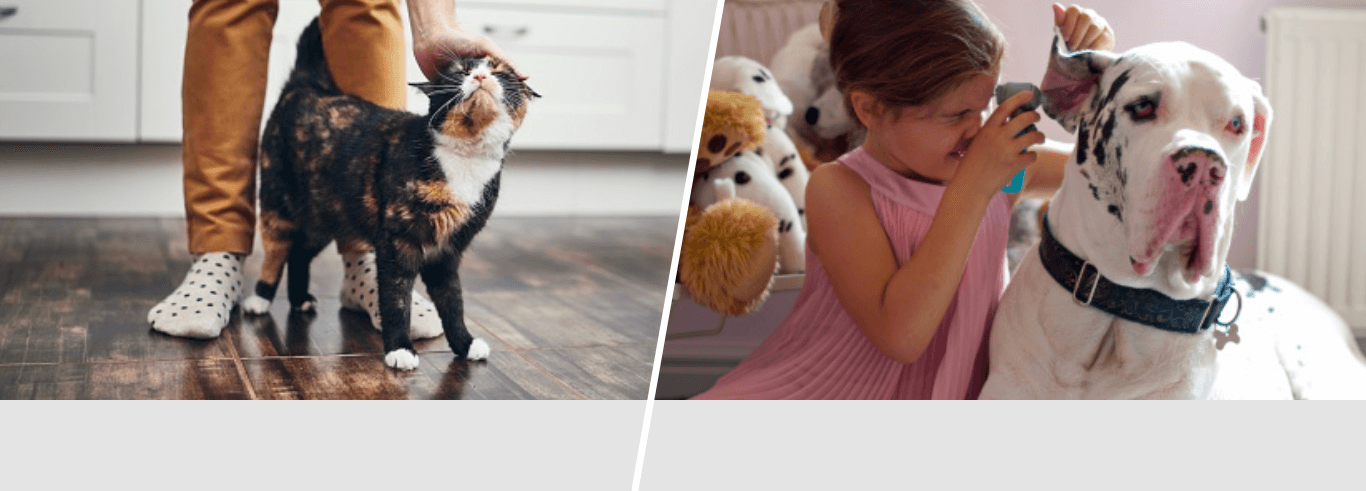Dog Body Language: What Your Dog is Trying to Tell You
Understanding dog body language is a valuable part of being a dog owner. Knowing what your dog is trying to tell you will allow you to approach them in the right way and help you better understand your precious pooch. Body language is a dog’s primary way of communicating their feelings and intentions, therefore it’s something that shouldn’t be ignored.
But we’ve got you covered – we have put together our go-to guide full of dog body language meanings and how to read them, so that next time your dog is trying to tell you something, you can give them the right space or attention they need. Let’s start with a few questions you may have been wondering first..
How do dogs communicate with you?
As we’ve just mentioned, body language is your dog’s main way of communicating, through a number of gestures such as the way they position themselves, their facial expressions, movements, and much more.
What does it mean when a dog puts its paw on you?
When your dog puts their paw on you it is a positive sign, as it’s their way of communicating love and affection. It’s also often how they request attention from you, so if your dog does this, it could be an indication that they want you to pet or play with them.
Why does my dog follow me everywhere?
Your dog following you around is a strong signal that they trust you and feel safe in your presence. But when your dog won’t leave your side and follows you very closely, it can mean they want something or feel scared.
Why does my dog stare at me while laying down?
Dogs quite often use eye contact as a way to communicate how they feel. If your dog is calm and laid down staring at you, this can be a sign they’re trying to express affection and show they trust you.
What does it mean when a dog sighs?
Sighing is another way that a dog will communicate how it’s feeling, the key thing to look out for is how they are positioned when they sigh. If a dog sighs with its eyes half-shut then this is a positive indication, as they’re showing comfort and happiness, whereas if its eyes are wide open when sighing it could signify the dog is feeling disappointed.

Stressed dog body language
Dogs show signs of experiencing stress through body language in many different ways, here are some of the most common.
- Tucking away their tail and/or ears
- Yawning or licking
- Pacing
- Whale eye (revealing the whites of their eyes)
- Avoiding eye contact
The way to address stress depends on the situation, it’s important to identify what it is that is causing your dog stress and eliminate it. It could be down to things such as the environment they are in, another dog’s presence, or even a medical condition. We would always recommend visiting a vet if your dog shows frequent signs of stress.
Happy dog body language
You may be wondering how to know if your dog is happy, and we’re here to tell you that they can show you in many different ways. A dog’s tail wagging is one of the most common positive body language signs, but it doesn’t stop here.
- Tail wagging
- Relaxed ears and body
- Leaning into you or pushing their head into your hand
If your dog is showing any of these signs, it’s likely that they’re feeling happy and playful, making it a great time to show them affection and attention.

Unhappy dog body language
Body language is a great way to understand the signs your dog is unhappy, just like when they’re happy, it can be easy to spot when your dog is feeling uncomfortable or unhappy. These are the most frequent signs:
- Lowered or tucked in tail
- Ears folded back
- Hiding and avoiding eye contact
- Rolling onto their back and showing a stiff posture
When your dog uses body language like this, especially hiding or walking away from you, it’s often best to leave them to do this rather than force interaction, depending on the safety of the situation.
Angry dog body language
How to tell if a dog is angry or playing can be difficult as the body language can be similar. Signs of aggression in dogs often occur when your dog is feeling threatened, but how they react to this feeling can vary.
- Stiff tail
- Tall body position
- Ears flat or folded back
- Fixed eye contact
- Growling and showing their teeth
- Raised hackles
Similarly to stress, aggressive body language in dogs can be due to a medical condition causing them pain, therefore if they show these signs regularly it’s important to visit a vet. In these circumstances, you should allow your dog space and keep a distance.
We hope this has helped you better understand your precious pooch. Reading dog body language is really helpful and a great way to develop a stronger bond. It’s especially important to notice dog body language when meeting another dog – if a dog is showing signs of being scared or angry, it should be kept away from other dogs for safety, but when demonstrating playful body language, it’s usually safe to let the dogs interact with each other (assuming the other dog is showing playful body language too). This will enable you to keep your dog and other dogs safe and happy.
 Sorry, our lines are now closed
Sorry, our lines are now closed



